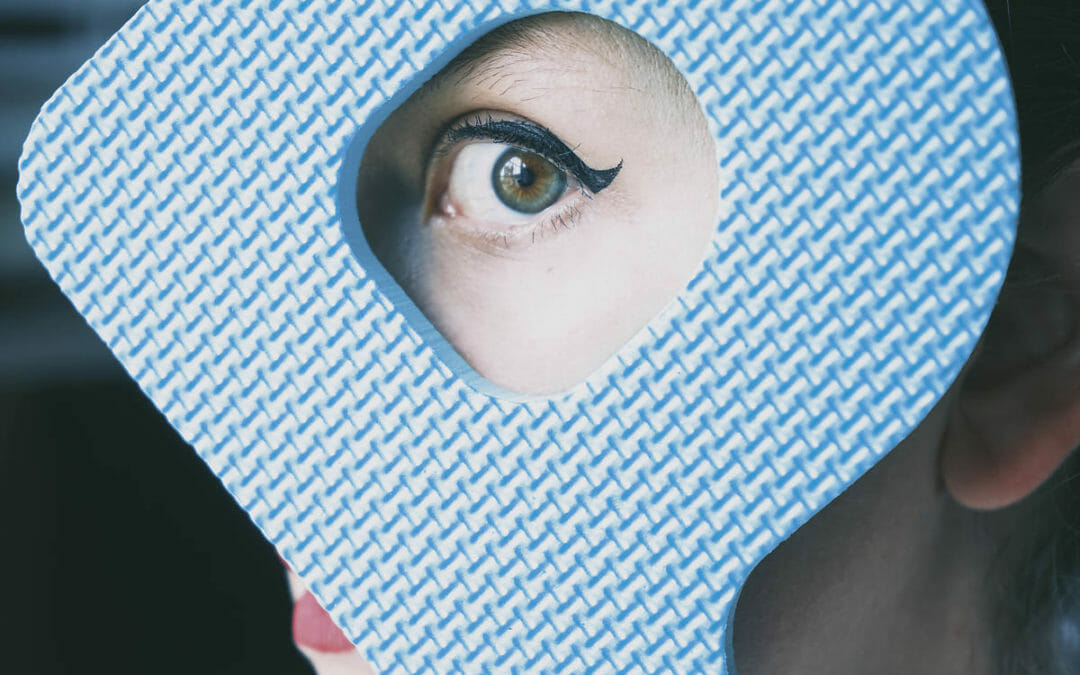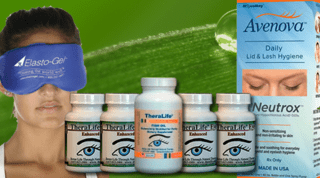What is blepharitis?
Blepharitis (BP) is eyelid inflammation.
It may create tightening and sticking in the lashes.
The inflammation is around lashes.
Some treatment methods may be used to reduce symptoms including home treatment.
The article covers the symptoms and treatment as well as prevention strategies.
Blepharitis affects all ages and can typically be classified acutely or chronically and chronic adult are most common.
At a glance
Symptom: red eyes / skin rash – crust on the eyelids –
Types
The blepharitic system consists in two types.
You may have only one kind.
Anterior BP.
Anterior blepharitis affects your eyelids, it occurs on your outer lash line and eyelids. It is caused by bacteria in skin or dandruff in the head and forehead.
It can be caused by: a type of bacteria that lives on the skin a skin condition, such as seborrhoeic dermatitis.
Posterior BP
Posterior blepharism is an irritated eye crease affecting the outer surface of the eyelid. The condition is caused when the eyelid oil glands become blocked – called meibomian gland dysfunction.
Meibomian blepharitis patients have a blockage of the oil glands in the eyelids, poor quality of tears and redness of the lining of the eyelids.
Causes & risk factors
BP is a common eyelash infection which causes redness, thickening or flaky crusting around eyelids or lashes. Usually called dandruff.
Eventually, there can be a sticky plaque on the lid, causing lash loss, obstruction of pores, infections and other problems.
BP can be diagnosed by eye examination. In some cases doctors may dredge up the eyelids and remove brow smears.
Anterior blepharitis
Anterior usually caused by bacterial infections or scalp dandruff (seborrhoids blephariti).
The bacteria is commonly spotted around the face and in lids, and a mild infection could occur in these spots.
Less commonly an eye infection caused by mites can be causing anterior blepharitis.
Posterior blepharitis
Posterior occurs where the gland of the eyes produces oil (meibomian blephariti). This provides good conditions for bacteria growth.
Posterior blepharitis is often caused by other skin disorders, such as dandruff and skin rosacea.
Causes- Acute
BP may result from multiple factors and can either be chronic or acute.
Acute ulcerative BP is usually caused by bacterial infection (usually staphylococcal) of the eyelid margin at the origins of the eyelashes; the lash follicles and the meibomian glands are also involved. It may also be due to a virus (eg, herpes simplex, varicella zoster).
Tell me the best way to check?
Your eye surgeon will be able to determine the cause and extent of the BP through an eye examination.
During your examination, your doctor will carefully check you for eyelids and eyelashes. They are able to use bright lights or special magnifying equipment.
Symptoms
People with BP may experience bruising, burning, red or swelling eyes or dry skin.
BP usually causes minor itchy skin but can cause more severe pain in the joints.
Occasionally, however, the condition may lead to worse symptoms including blurred vision and swollen eyelids.
The contact or friction of the irritable area causes secondary inflammation.
Common symptoms include:
- Burning, stinging, or watery eyes
- Dandruff-like flakes on eyelids and eyelashes
- itchy eyelids
- Dry eyes
- Eyelid swelling or thickening
- Feeling like there is something in your eye
- Red, irritated eyelids
- Tears that are foamy or have bubbles in them
- Waking up with crusty eyelids or eyelashes
Diagnosis
Blepharitis can be diagnosed through a comprehensive eye examination.
Testing, with special emphasis on the eyelids and the front surface of the eyeball, may include: patient history to determine any symptoms the patient is experiencing and any general health problems that may be contributing to the eye problem.
Treatments
While Blepharitis can’t easily be treated for life, it has the potential to improve the appearance of the skin by using eyelid hygiene products and medications daily.
Do not wear contact lenses while you have symptoms do not use eye makeup, especially eyeliner and mascara, while you have symptoms.
Depending on the cause of your BP, your doctor might recommend: Artificial tears Antibiotics , either as an ointment, drops, or a spray for your eyes, or as pills that you swallow.
Lubrication Dry eye is often treated at the same time as BP.
Chilled, preservative-free, artificial tears are often recommended and dosed four times per day in both eyes, unless otherwise directed by your doctor.
Key is to keep your eyelids clean, including: eye pads and wipes eyedrops.
TheraLife Treatment
All natural blepharitis treatment that works.
Home Remedies
BP is usually treated with home remedies. In some cases, prescription medications may be needed.
Eye Warm Compresses
The first treatment for blepharitis is placing a warm compress on the affected eyelid several times a day.
A warm wash cloth with hot water is not good enough. The cloth cools off too quickly. You need consistent heat for at least 10 minutes followed by eyelid massage.
See protocol from TheraLife.
Eyelid Scrub
To keep bacteria levels low, it is important to scrub your eyelids with a gentle cleanser.
Baby shampoo is commonly recommended but we not know it is not effective.
You can also use a specially formulated eyelid wash. We highly recommend Avenova. Note do not wash the eyelid cleanser off after use. Leave it on to prevent further bacterial re-attachment.
Gently rub the eyelid cleanser over your closed eyelids and the edge of your lids for about 30 seconds to loosen clogged oily debris. Apply light pressure along your eyelashes to squeeze out clogged oils from the glands behind your lashes.
Do this twice a day after applying a warm compress for best results. This can help clear up mild blepharitis.
Over-the-Counter Treatments
Medicated eyelid washes that treat blepharitis are available over the counter. These cleansers can help clear up chronic blepharitis and prevent further inflammation of the eyelids.
Avenova
Avenova is an eyelid wash that contains hypochlorous acid 0.01%. Clinical studies show hypochlorous acid treats the bacteria that cause blepharitis.7
To apply, spray Avenova on a cotton ball or cotton round. Then, wipe it in a horizontal motion across your upper and lower lashes three times. Repeat with a fresh cotton pad on the other eye. Use twice a day.
Cliradex- for Demodex mites
Cliradex is a medicated wipe that contains Melaleuca alternifolia, a form of tea tree oil that treats demodex blepharitis. Research shows a compound in tea tree oil known as 4-Terpineol is what helps ease symptoms.
To treat blepharitis, wipe eyelids and lashes with Cliradex wipes twice a day for 10 days. If symptoms do not clear up, continue to use Cliradex wipes once a day for another 10 days.
Cliradex is safe for everyday use and also works to remove eye makeup.
Blephadex
Blephadex is a medicated wipe that treats blepharitis caused by eyelash mites. The wipes contain a gentle eyelid cleanser, tea tree oil, and coconut oil.
According to research, tea tree oil can reduce Demodex mites and help clear up blepharitis.5 In addition, tea tree and coconut oils have anti-microbial properties, meaning they kill microorganisms like bacteria, viruses, and fungus.
Coconut oil also has powerful anti-inflammatory and pain-killing properties that help to relieve blepharitis symptoms.
Recap
Newer treatments—Avenova, Blephadex, and Cliradex—contain ingredients that treat the root causes of blepharitis and help clear up chronic infections.
Prescriptions
If at-home care does not relieve blepharitis symptoms, see an eye doctor (ophthalmologist).
They can prescribe medicine that treats the causes and symptoms of blepharitis.
Antibiotics
Antibiotics are used to treat blepharitis caused by bacterial overgrowth. Depending on the severity of the infection, your healthcare provider may prescribe a topical antibiotic applied to the skin or an oral antibiotic taken by mouth.
Topical antibiotic ointments used to treat blepharitis include:9
- Erythromycin ophthalmic
- Bacitracin ophthalmic
If topical treatments do not fully clear up the infection, your healthcare provider may prescribe an oral antibiotic such as tetracycline or doxycycline.
Steroids
In some cases, corticosteroids are used to control eyelid inflammation and irritation.
Prescription steroid eye drops are used to treat blepharitis can be delivered in eye drops, topical ointments, or oral medicine.
Combination Treatment
Blepharitis is often treated with a combination of antibiotics and corticosteroids. Research shows combination treatments can be more effective than antibiotics or steroids alone.9
The prescription medication Blephamide combines an antibiotic (sulfacetamide sodium) with a corticosteroid (prednisolone acetate).
Blephamide comes in eye drops and as a topical ointment.10
Eyelash Mite Treatment- Demodex
When eyelash mites cause blepharitis, your healthcare provider may prescribe a medication that kills parasites.
Stromectol (ivermectin) is an oral drug that is used to kill Demodex eyelash mites. The medication is taken in two doses one week apart.
Summary
Home treatments for blepharitis include applying warm compresses and scrubbing the eyelid with baby shampoo. Medicated eyelid washes that treat blepharitis, sold over the counter, can also help treat mild cases.
If at-home treatments are unable to calm the irritation and inflammation, see an eye doctor. You may need prescription eye drops, topical ointments, or oral antibiotics and steroids.
References
National Eye Institute. https://www.nei.nih.gov/learn-about-eye-health/eye-conditions-and-diseases/blepharitis. Accessed Jan. 25, 2020.





